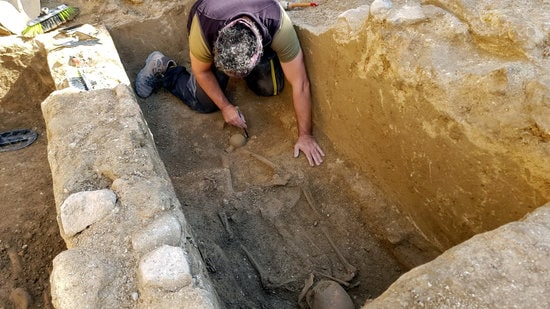Discovery of tombs to help reveal the mysteries of Roman Dertosa
Building work in Tortosa uncovers remains of three bodies, with experts hoping find might lead to location of ancient city's cemetery

Building work in the southern Catalan town of Tortosa has uncovered Roman tombs containing the remains of three bodies, and experts do not rule out the possibility that they may have stumbled on the site of the cemetery of what was once the city of Dertosa.
"We do not know for sure and we have to stick with what we have, but experience tells us that Roman cities had their cemeteries on the roads outside the wall and it's possible that in this area there might be more burial sites," said the head of the dig, Damià Grinyó.
The archeologists have dated the find to the 4th century AD, although the ceramics, coins and other materials found at the site will later confirm this. What is sure, is that rectangular tombs like the ones discovered are a rarity in Spain.
What is known about Roman Dertosa mainly comes from documentation, but apart from a few unfinished tombs found in the old part of the city very little in terms of physical remains have so far been unearthed.
Previous work had uncovered a section of the city wall and some spaces that may have been part of the forum, and so the latest discovery of the tombs when buildings were knocked down to build a new cultural center is an exciting prospect for the archeologists.
Remains of two adults and a child found
The building work was halted when one of the tombs was uncovered, with the excavations that followed revealing two more, which together contained the remains of two adults of between 35 and 40 years of age and a child aged between 9 and 12.
The anthropologists are now trying to determine the gender, the exact age, and any illnesses they may have suffered from, although that work in the laboratory could take up to two years to complete.
Iron and bronze nails found in the tombs suggest that the bodies were buried in wooden coffins, and a jar of ointment was also found in the grave, considered unusual in the Roman Empire at that time, while coins found in the tombs will help ascertain the exact date.
"It allows us to learn a significant amount about Roman Dertosa," said the mayor of Tortosa, Meritxell Roigé, who added: "We know about the importance of Roman Dertosa but we did not have the elements to show it."
The building work on the new cultural center has now resumed, and the tombs will be covered once again while the construction goes ahead, which will now include a special place devoted to showing the tombs and the items found there.